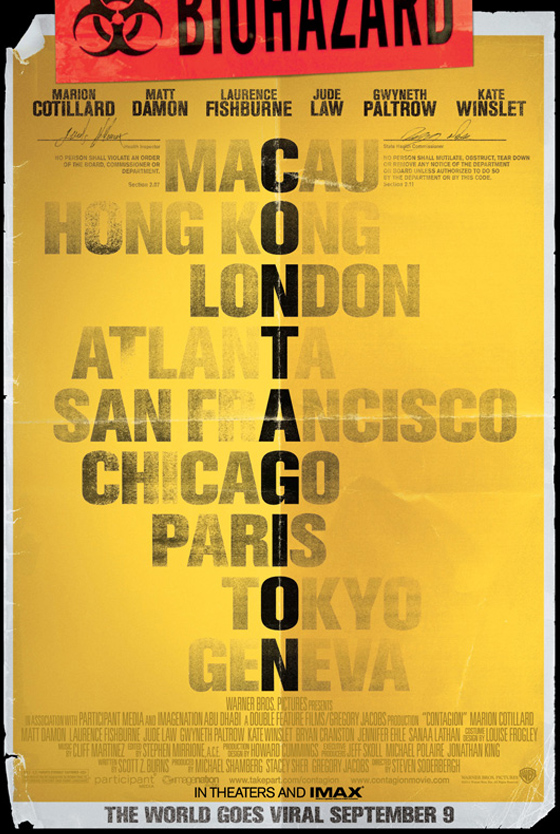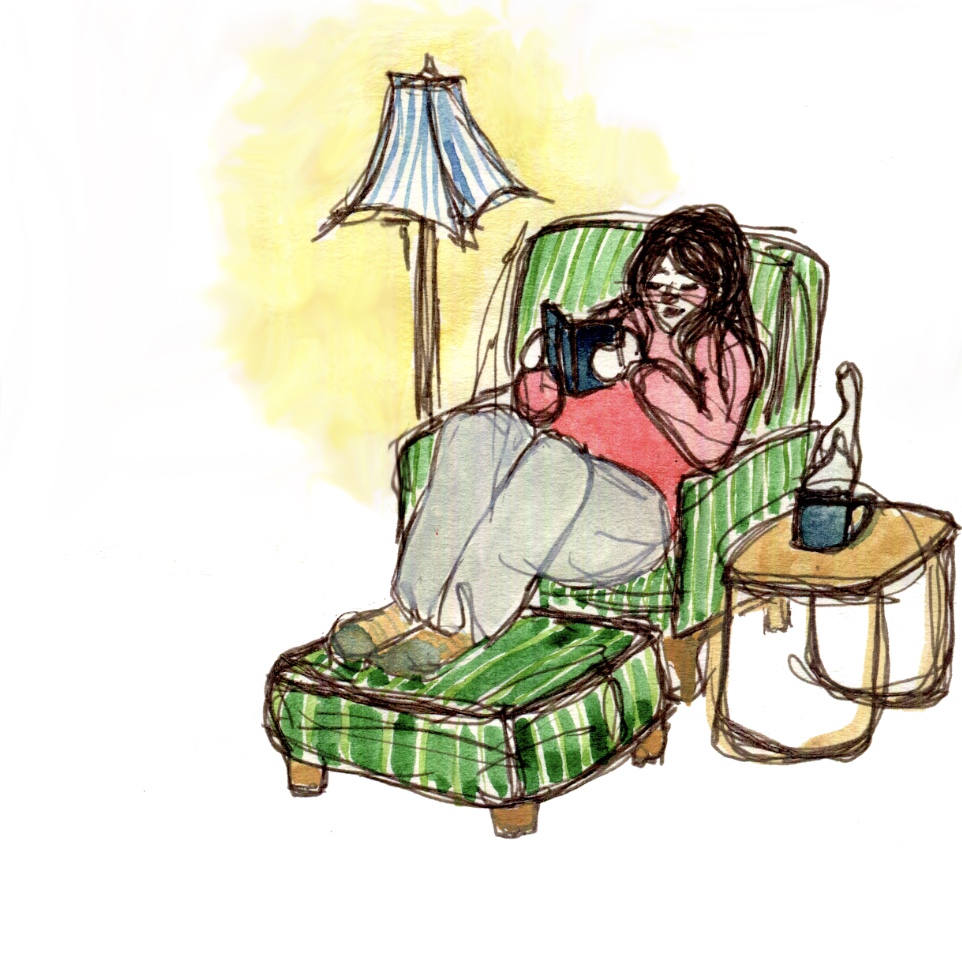When I sat through a class to receive my food handlerʼs permit they had us watch a brief, monotonous video about how germs spread to surfaces through the contact of unclean hands. “Contagion” is a much more exhilarating 105-minute expansion of the same instructional video with higher production value, A-list actors and a good plot.
Halfway through watching the movie I noticed I was resting my face against my open
palm. I immediately panicked. After all, Kate Winsletʼs character Dr. Erin Mears
informs a table of health department execs that the average human touches their face
upwards to three thousand times a day with bacteria-contaminated hands. Is it true?
Who cares! Just one touch with an unclean finger is enough to threaten your health.
Movie has grim beginning, follows multiple characters
“Contagion” starts off grim with the loss of Beth, played by Gwyneth Paltrow, who had just returned home from a business trip in Hong Kong to her husband Mitch, played
by Matt Damon, and their young son Clark. We know something is wrong with her from the
opening shot. She is sweaty, pale and strained by a hacking cough, and when her fever
reaches a breaking point a rather disturbing episode of seizures ensues. The next
minute she is gone and a stunned Mitch is left wondering what happened between
breakfast and the ICU?
Meanwhile, others around the world are exhibiting Bethʼs symptoms: a young man in
Hong Kong, a beautiful woman in London and a businessman in Tokyo all die within
hours of each other. What “Contagion” succeeds in is clearly illustrating a global
pandemic through the smaller, more intimate eyes of its characters. The stringent
realism of the sickness and its rampant spread is much more unsettling than some
formulaic Hollywood virus or Zombie infection.
The narrative follows several parallel story lines of different people experiencing fear
and panic in different ways. We see the elite doctors Cheever, Mears, Hextall and
Orantes, played by Laurence Fishburne, Winslet, Jennifer Ehle and the gorgeous
Marion Cotillard, who are working tirelessly to identify the virus and produce a vaccine.
Alongside them, we witness the affairs of the apparently immune Mitch who looses a sick Clark and now protects his teenage daughter Jory from the virus and the world of discord it has created. The most color is found in Alan Krumwiede, an Australian Internet blogger
played by Jude Law, who is determined to reveal the villainy of U.S. drug companies. I
confess, I liked Alan because I like Jude Law, but also because out of all the characters, he plays by his own rules rather than the rules of the virus.
Script has smart dialogue, suspense
“Contagion” has a script that any perceptive moviegoer should appreciate, one that
challenges us to keep up but doesnʼt taunt with ambiguity or narrative dishevelment. Instead, writer Scott Burns gives us smart dialogue and a plot progression that is orderly, engrossing and drastically linear. Director Steven Soderberghʼs methodical style of framing, pace and adding subtle emphasis to content builds on the filmʼs suspense and substance. Here is a filmmaker who knows how to utilize his actors and environments to their fullest.
Plot relates to possible real-world realities
What I appreciated so much about “Contagion” is the same thing that so greatly
troubled me: It thrusts us into a world that would have been fully realized if the swine
flu had proved to be as contagious and deadly as many predicted back in 2009. It
shows us how quickly society can crumble when people feel threatened by something
they cannot control. I had an epiphany during the second act of the film — we as frail,
mortal human beings fear sickness so greatly because we fear the idea of death. With
any damage or ailment to our physical selves we realize just how thin the veil of life
really is. “Contagion” knows this and uses it to fuel its energy.
In the film we see populations infected not only by disease but by a fear of their lives
ending on natureʼs terms rather than their own. Soderbergh and Burns make this fear
palpable but not overwhelming, earning the virus enough credit to be the villain but not
to dwarf the wonderfully pragmatic mood established in this genuine piece of
contemporary filmmaking.
I left the theater in awe of what “Contagion” had accomplished, covering the entire span
of an alarmingly believable global pandemic in an hour and 45 minutes. And even
more amazing was the fact that when the credits started rolling, nothing felt left out. I
marveled at how complete it was, how masterfully it had conveyed such a wide-scale
plot with genuine humility and vigilance.
Film needs more emotion to stir audience
One criticism I have is that the film could have displayed more emotion. However, at the
climax we encounter a very moving scene in which Mitch finally laments for the passing
of Beth in full stride. I admit my eyes watered a bit watching Damonʼs carefully
controlled sobs as Mitch looks at pictures of his deceased wife. It reminds us that a
movie can have everything it needs to work, but without the bridge of real humanity it
wonʼt stir an audience one bit.







